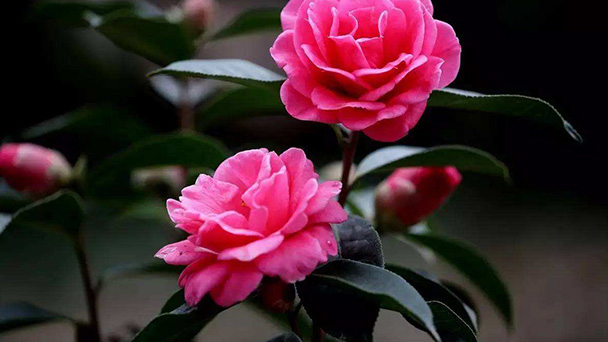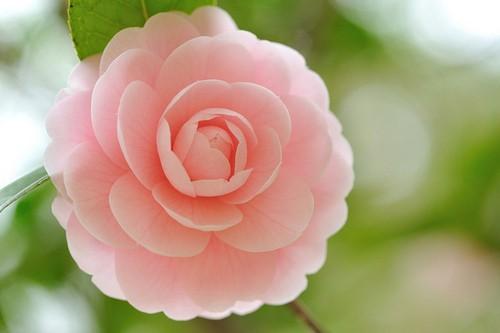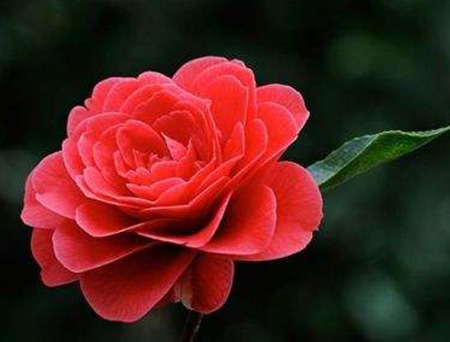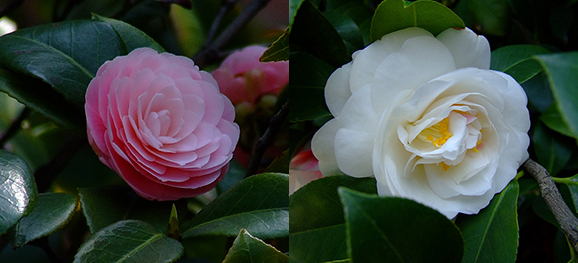Camellia japonica L profile
Written by Maggie
Nov 18 2020

Camellia japonica L is a dicotyledonous plant in the Camellia family.
Camellia japonica L is native to China. It likes a warm, humid and semi-shady environment, afraid of high temperatures, and avoids the scorching sun. There are wild species in Sichuan, Taiwan, Shandong, Jiangxi and other places in China. Widely cultivated everywhere, camellia japonica l has a wide variety of flower colors, most of the flowers are red or light red, and some are white, mostly double petals. In the red camellia group, Camellia japonica L is one of the few representatives of bald ovary for viewing. The flowers have hemostatic effect and the seeds are oiled for industrial use.
Camellia japonica L picture

Camellia japonica L morphological characteristics
Camellia japonica L is a shrub or small tree plant with a height of 9 meters and glabrous branches. Leaves are leathery, oval, 5-10 cm long, 2.5-5 cm wide, slightly pointed at the apex, or abruptly pointed with blunt tips, broadly wedge-shaped at the base, dark green above, shiny after drying, glabrous, light green below , hairless, 7-8 pairs of lateral veins, visible on the upper and lower sides, with fine serrations on the edges. The petiole is 8-15 mm long and hairless. Flower is terminal, red, sessile; about 10 bracts and sepals, composed of cup-shaped bracts about 2.5-3 cm long, semi-circular to round, 4-20 mm long, with silky hairs on the outside, shedding. Petals are 6-7, 2 near-round outer, almost free, 2 cm long, hairy on the outside, 5 continuous bases about 8 mm on the inner side, obovate, 3-4.5 cm long, glabrous; stamens 3 rounds, about 2.5-3 cm long. The outer ring filaments are continuous at the base. The filament tube is 1.5 cm long, glabrous. The inner ring stamens are free, slightly shorter, the ovary is glabrous, the style is 2.5 cm long, and the apex is 3-lobed. Capsules are round, 2.5-3 cm in diameter, 2-3 compartments, with 1-2 seeds in each compartment, 3 dehiscence, and thick wood. Flowering period is from January to April.
Camellia japonica L growth habit
Camellia japonica L is native to China. It likes a warm, humid and semi-shady environment, afraid of high temperatures, and avoids the scorching sun. The suitable temperature for growth of Camellia japonica L is 18-25℃, 13-18℃ from March to September, and 10-13℃ from September to March of the following year. When the temperature is above 12℃, the bud will start to sprout, and the growth will stop when the temperature is above 30℃. The initial flower temperature is 2℃, and the suitable temperature for flowers to bloom is 10-20℃. Camellia japonica L cold-tolerant varieties can tolerate -10℃ for a short time, and the general varieties -3--4℃. In summer, if the temperature exceeds 35°C, leaf burns will occur. Camellia japonica L is suitable for an environment with sufficient moisture and humid air, avoiding dryness. In summer and autumn with high temperature and drought, water or spray water in time, and the relative humidity of the air should be 70%-80%. Pay attention to drainage during the rainy season to avoid waterlogging and rot in the roots.
Camellia japonica L is a semi-negative plant. It is suitable for growing under scattered light. The seedlings need to be shaded for fear of direct sunlight. However, long-term overshadowing is not good for the growth of camellia, with thin leaves and less flowering, which affects its ornamental value. Adult plants need more light to facilitate the formation and flowering of flower buds.
For open field cultivation, choose deep, loose soil and good drainage, the most suitable pH is 5-6. Alkaline soil is not suitable for the growth of camellia. Use fertile loose, slightly acidic loam or leaf-humid soil for potting soil.

Camellia japonica L distribution range
Camellia japonica L is mainly distributed in Zhejiang, Jiangxi, Sichuan, Chongqing and Shandong, China, as well as Japan and the Korean Peninsula. There are wild species in Sichuan, Taiwan, Shandong, Jiangxi and other places, and they are widely cultivated throughout China.
Camellia japonica L main value
Watch
Camellia japonica L is a traditional Chinese garden flower and tree. According to data records, there is an old camellia tree in the Taihua Temple in the suburbs of Kunming, Yunnan Province, which was hand-planted by Emperor Jianwen in the early Ming Dynasty. There is a red camellia in the Camellia Temple in the eastern suburbs of Kunming. It is a relic of the Song Dynasty. It is 20 meters high. In the flowering season, the red British mulberry tree, the flowers and people are like plants, like peony. The camellia tree has a colorful crown, verdant green leaves, large and gorgeous flowers, luxuriant branches and leaves, and evergreen throughout the seasons. It is especially rare to bloom at the end of winter and early spring when the flowers are withered. Throughout the ages, many poets have written verses in praise of camellia.
Camellia japonica L is shade-tolerant. The Jiangnan area is located on the edge of sparse forests. Forest parks can also be scattered or grouped along the roadside of the forest. Some sexually healthy varieties can be used for flowering. In the north, potted plants are suitable for viewing. They can be placed in the entrance hall, meeting rooms, and public places to achieve good results; planted on the balcony and window of the family, showing the spring.

Medicinal
Camellia japonica L also has high medicinal value. It has curative effects such as astringent, hemostasis, cooling blood, regulating stomach, dispelling blood stasis, and reducing swelling. When picking flowers and processing, pay attention to picking, sun-drying or drying when buds are ready during the spring equinox to rainy season. During the drying process, do not turn over to avoid broken petals. After drying, wrap tightly with paper and place in a dry and ventilated place. Set aside to prevent moisture, mold and insects. Camellia japonica L dried flowers are preferably dry, red in color, mildew-free, and buds are grown and still in bud. The leaves and roots can be used throughout the year, and the seeds are picked after they are mature.
Latest Updated
- Benefits of Bugleweed - 7 Science-backed Health Benefits
- Bugleweed Dangers & Side Effects - Is It Poisonous?
- How to Plant Evergreen Trees - What You Should Know
- When to Plant Evergreens - Grow Guide for Evergreen Trees
- 12 Wonderful Evergreen Shrubs for Your Garden
- 12 Popular Evergreen Plants with Pictures for Beginners
- When And How To Prune A Lilac Bush Like a Pro
- How to Grow & Care for Lilac Vine (Hardenbergia Violacea)
- Japanese Lilac Tree (Syringa Reticulata) Care & Propagation Guide
- Shumard Oak Pros and Cons - What to Know
Popular Articles
- Winter maintenance of Antirrhinum Majus
- How to Grow Terminalia Mantaly Tree
- How to Grow and Care for Crossostephium Chinense
- How to grow Antirrhinum Majus in spring
- Peristeria Elata (Dove Orchid) Profile: Info & Care Guide
- Underwatered Snake Plant (Sansevieria Trifasciata) - Signs And How To Fix
- How to Care for Brazilian Jasmine Plant (Mandevilla Sanderi)
- How to Grow & Care for Graptopetalum Purple Delight in Summer
- Rosa Chinensis (China Rose): Plant Growing & Care Tips
- How to Care for Baby Sun Rose (Aptenia Cordifolia)